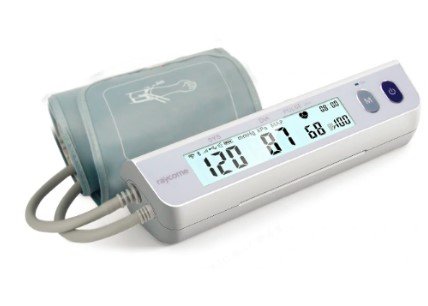Ensuring Quality Control in Medical Labs and Phlebotomy Services: Key Regulations and Guidelines
Summary
- Quality Control is essential in medical lab and phlebotomy services to ensure accuracy and reliability of Test Results.
- Regulations and guidelines set by organizations such as CLIA and OSHA help maintain high standards in the industry.
- Proper training, documentation, and monitoring are key aspects of handling Quality Control in medical lab and phlebotomy services.
Introduction
Medical laboratories and phlebotomy services play a crucial role in healthcare by providing diagnostic information for patient care. Ensuring the accuracy and reliability of Test Results is paramount in these settings, which is why Quality Control is a top priority. In the United States, there are specific Regulations and guidelines that govern the handling of Quality Control in medical labs and phlebotomy services. These Regulations aim to maintain high standards of practice and protect both patients and healthcare workers.
Regulations for Medical Labs
Medical laboratories in the United States are regulated by the Clinical Laboratory Improvement Amendments (CLIA), which are administered by the Centers for Medicare and Medicaid Services (CMS). CLIA Regulations establish Quality Standards for all laboratory testing performed on humans, including blood tests and other types of Diagnostic Tests.
Key CLIA Regulations for Medical Labs:
- Personnel qualifications: CLIA requires that laboratory personnel meet specific education and Training Requirements to perform testing.
- Quality Control: Labs must have procedures in place to monitor and ensure the accuracy and precision of Test Results.
- Proficiency Testing: Labs are required to participate in Proficiency Testing programs to assess the accuracy of their Test Results.
- Recordkeeping: Labs must maintain detailed records of testing procedures, Quality Control measures, and Test Results.
- Inspection requirements: Labs are subject to periodic inspections to ensure compliance with CLIA Regulations.
Guidelines for Phlebotomy Services
Phlebotomy services, which involve drawing blood for diagnostic testing, are also subject to Regulations and guidelines to ensure quality and safety. The Occupational Safety and Health Administration (OSHA) sets standards for phlebotomy practices to protect healthcare workers from bloodborne pathogens and other hazards.
Key OSHA Guidelines for Phlebotomy Services:
- Personal protective equipment: Phlebotomists must wear gloves, gowns, and other protective gear to prevent exposure to blood and bodily fluids.
- Safe needle practices: Phlebotomists must follow proper techniques for needle insertion and disposal to reduce the risk of Needlestick Injuries.
- Infection control: Phlebotomy Equipment must be cleaned and sterilized regularly to prevent the spread of infections.
- Training and education: Phlebotomists must receive training on safe practices and infection control measures to protect themselves and their patients.
- Post-exposure protocols: Phlebotomists should be aware of procedures to follow in case of exposure to bloodborne pathogens.
Handling Quality Control in Medical Labs and Phlebotomy Services
Ensuring Quality Control in medical labs and phlebotomy services requires a comprehensive approach that involves proper training, documentation, and monitoring. Healthcare facilities must establish protocols and procedures to maintain the highest standards of practice and protect the health and safety of both patients and staff.
Key Aspects of Handling Quality Control:
- Training: Laboratory personnel and phlebotomists must receive adequate training on Quality Control procedures and best practices.
- Documentation: Detailed records must be maintained for all testing procedures, Quality Control measures, and Test Results.
- Monitoring: Regular monitoring and review of Quality Control measures are essential to identify any issues and ensure compliance with Regulations.
- External quality assurance: Participation in Proficiency Testing programs and external quality assurance schemes can help validate the accuracy of Test Results.
- Continuous improvement: Labs and phlebotomy services should seek opportunities for continuous improvement in Quality Control practices to enhance patient care and outcomes.
Conclusion
Regulations and guidelines for handling Quality Control in medical labs and phlebotomy services in the United States are essential to maintain high standards of practice and protect the health and safety of patients and healthcare workers. By following CLIA Regulations for medical labs and OSHA guidelines for phlebotomy services, healthcare facilities can ensure the accuracy and reliability of Test Results while minimizing risks associated with diagnostic testing. Proper training, documentation, and monitoring are key aspects of handling Quality Control in these settings, ultimately contributing to the delivery of quality healthcare services.

Disclaimer: The content provided on this blog is for informational purposes only, reflecting the personal opinions and insights of the author(s) on the topics. The information provided should not be used for diagnosing or treating a health problem or disease, and those seeking personal medical advice should consult with a licensed physician. Always seek the advice of your doctor or other qualified health provider regarding a medical condition. Never disregard professional medical advice or delay in seeking it because of something you have read on this website. If you think you may have a medical emergency, call 911 or go to the nearest emergency room immediately. No physician-patient relationship is created by this web site or its use. No contributors to this web site make any representations, express or implied, with respect to the information provided herein or to its use. While we strive to share accurate and up-to-date information, we cannot guarantee the completeness, reliability, or accuracy of the content. The blog may also include links to external websites and resources for the convenience of our readers. Please note that linking to other sites does not imply endorsement of their content, practices, or services by us. Readers should use their discretion and judgment while exploring any external links and resources mentioned on this blog.
